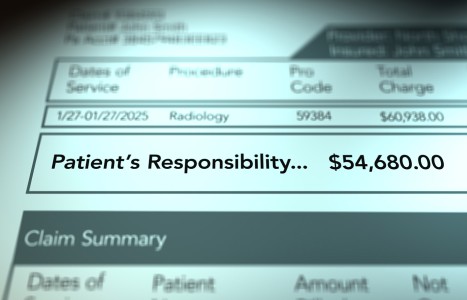On Oct. 21, 2025, a judge in Florida issued a groundbreaking decision in Complete Care v State Farm, 25-CA-1063. It concerns a fact pattern that many chiropractic doctors have faced wherein an insurer, such as State Farm or Allstate, decides to simply stop paying all claims submitted by a healthcare provider.
| Digital ExclusiveA Conservative Approach to the Management of Sudeck's Atrophy
Sudeck first described an acute atrophy of bone in 1900, which is dystrophy syndrome, and/or post-traumatic painful osteoporosis. It is characterized by patchy decalcification following trauma to the most common sites.
Clinically it may present with pain, edema, tenderness, cyanosis, coldness, sweating, and stiffness of the affected site. Since this pathophysiology results from a focus of injury to a related local sympathetic nerve which involves vasospasm of a terminal arteriole in a distal sector of the vascular tree of the involved part, Sudeck's atrophy is reflex sympathetic dystrophy (causalgia) of the joint components involved in the traumatic incident. It is a patchy osteoporosis resulting from a sympathetic nerve reaction to a traumatic focus. Pain resulting from movement of the part encourages restricted motion and this pain may become intense and persistent, burning in character, and these symptoms may be intensely aggravated by very minimal stimuli such as heat, emotion, touch, moving air, to name a few.
On the average, symptoms and findings run a course of weeks to months, and gradually diminish resulting in a part that is atrophic, in the absence of effective treatment.
Treatment may involve encouragement of blood flow during the actively vasospastic phase by elevation and active exercise of the involved part. The Buerger-Allen exercise is recommended by this author. Interferential current should be applied so that the electrode arrangement allows the point of intersection of the carrier currents to be located at the site of intense pain of the involved part. The beat frequency should be 100Hz, or higher in order to stimulate parasympathetic dominance.
If the pain is persistently severe and/or marked swelling threatens function, and/or there is evidence that the process is progressing to the contralateral region anatomically, referral to a neurosurgeon is mandatory.
References
Davis RV. Therapeutic Modalities for the Clinical Health Sciences, 1st ed, 1983. Copyright, Library of Congress TXU-389-661.
De Dominco. New Dimensions in Interferential Therapy -- A Theoretical and Clinical Guide. Reid Medical Books, Sydney, NSW, Australia.
Griffen JE, Karselis TC. Physical Agents for Physical Therapists, 2nd ed. Springfield: Charles C. Thomas, 1982.
Krupp & Chatton. Current Medical Diagnosis and Treatment, 1980. Lange.
Krusen, Kottke, Ellwood. Handbook of Physical Medicine and Rehabilitation, 2nd ed. Philadelphia: W.B. Saunders Company, 1971.
Schriber WA. A Manual of Electrotherapy, 4th ed. Philadelphia: Lea & Feibiger, 1975.
Turek. Orthopedics -- Principles and Their Application, 3rd ed. J.B. Lippincott.
R. Vincent Davis, DC, PT, DNBPM
Independence, Missouri


